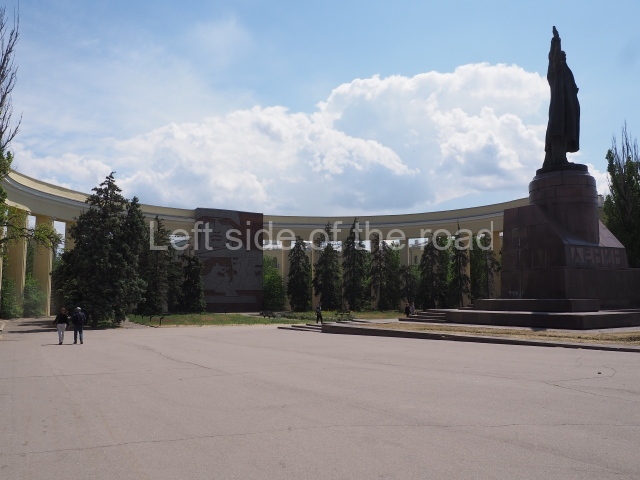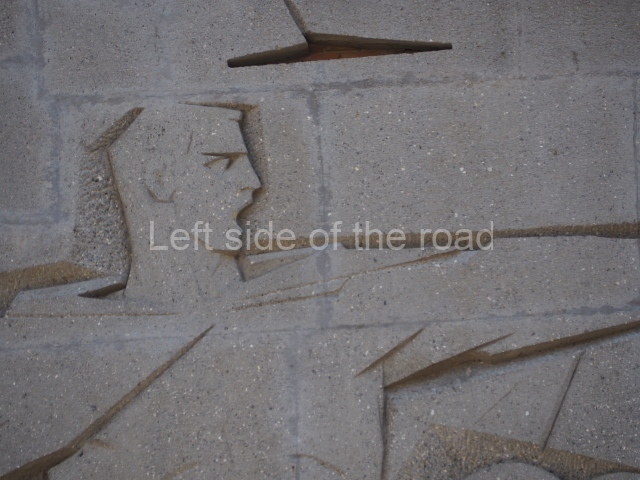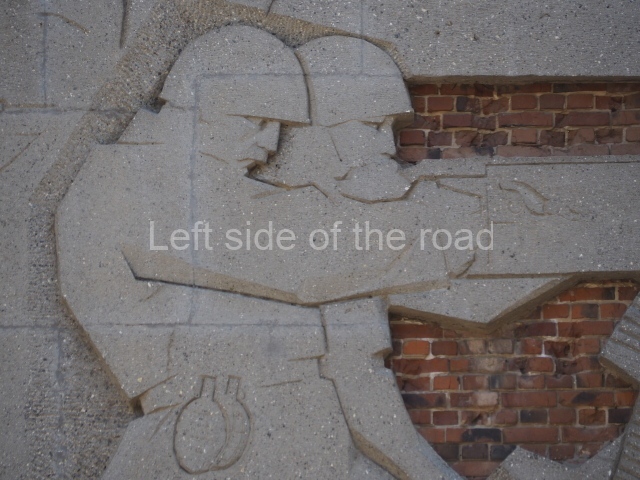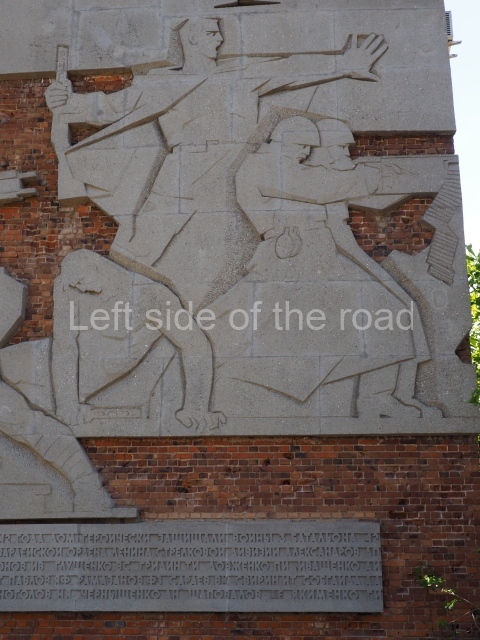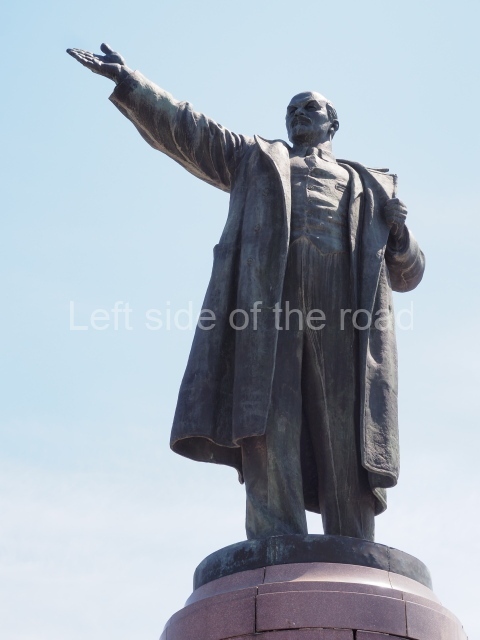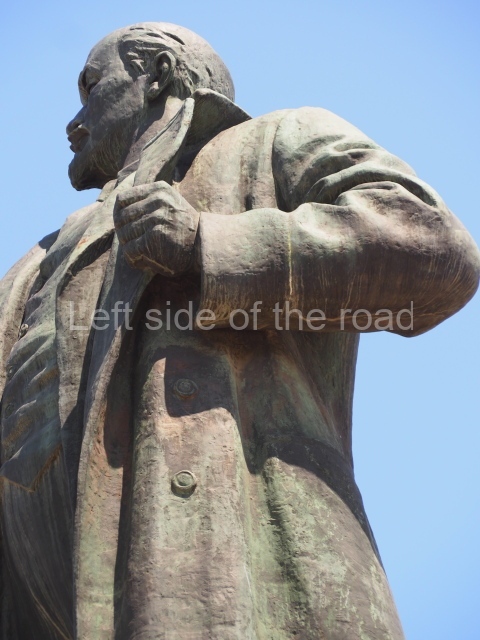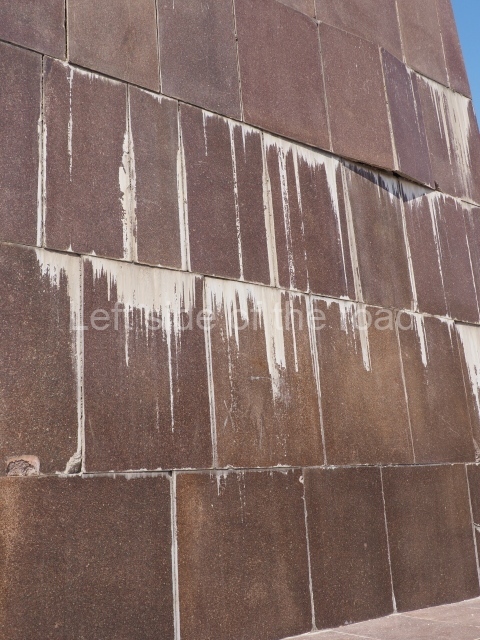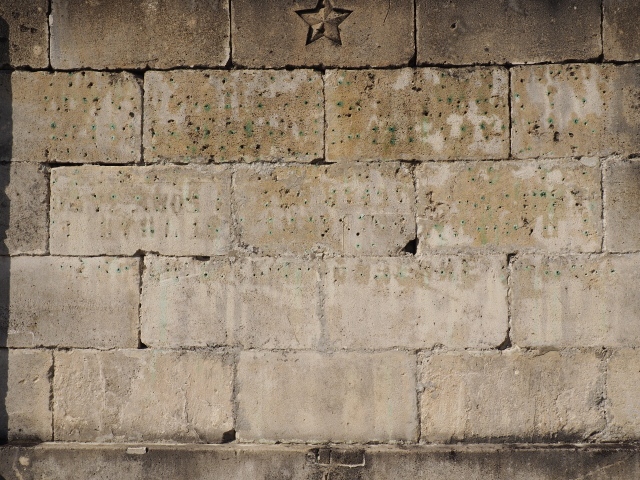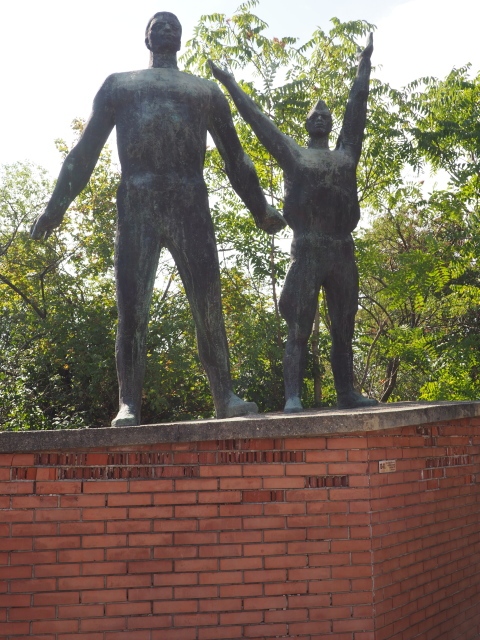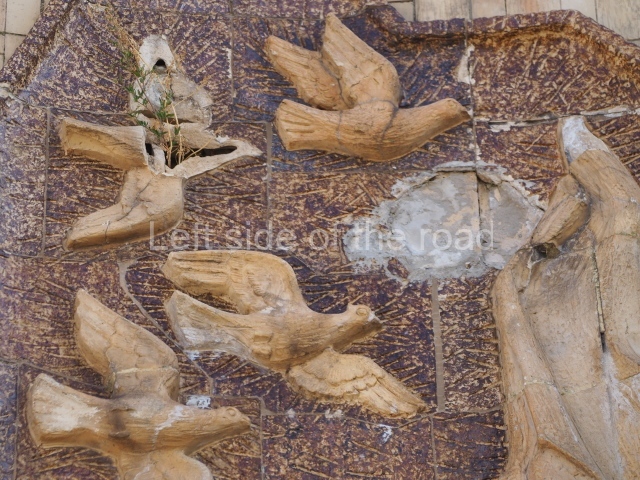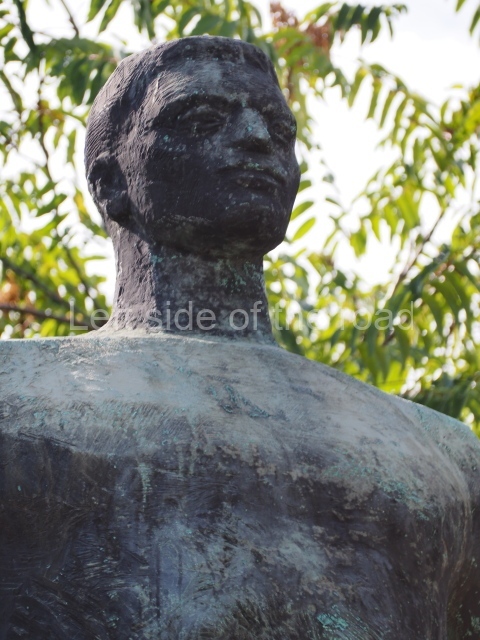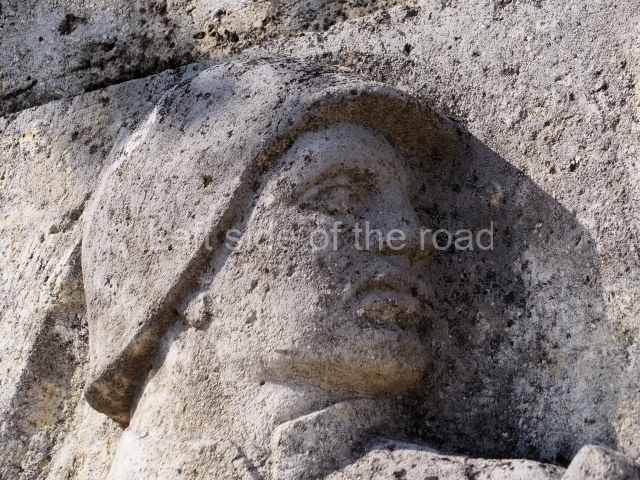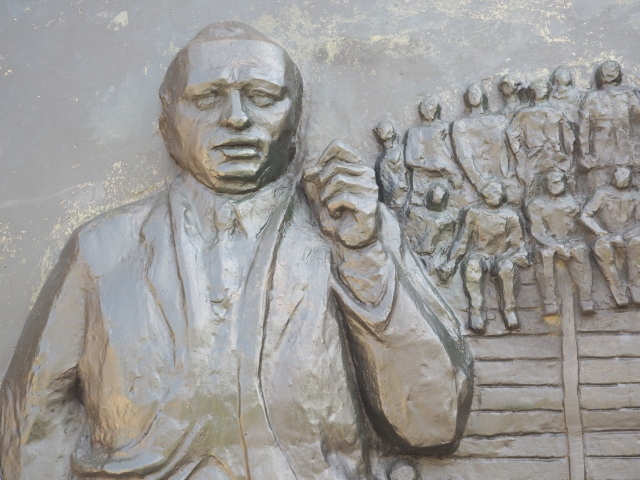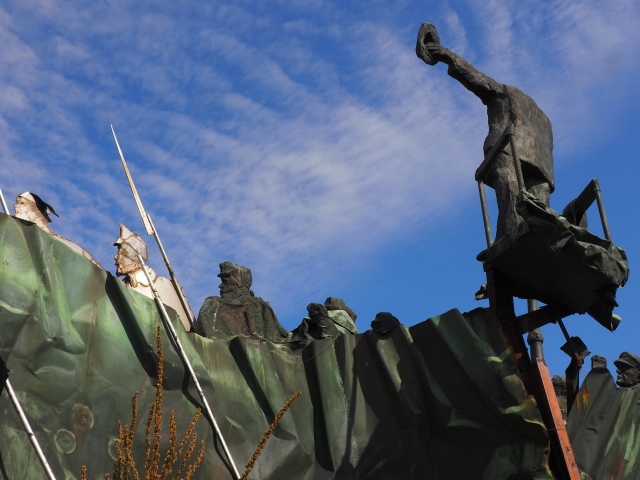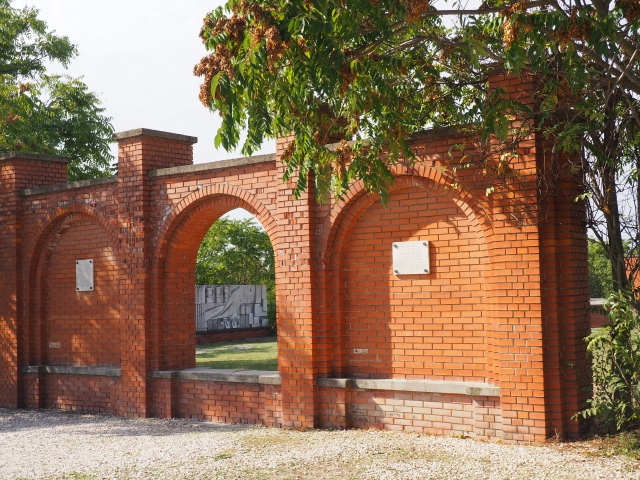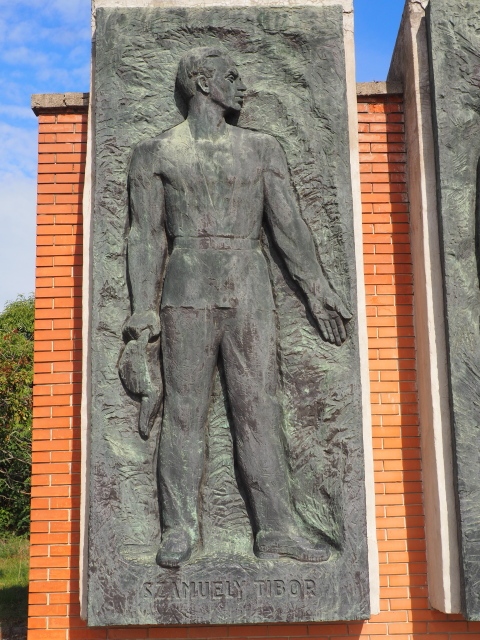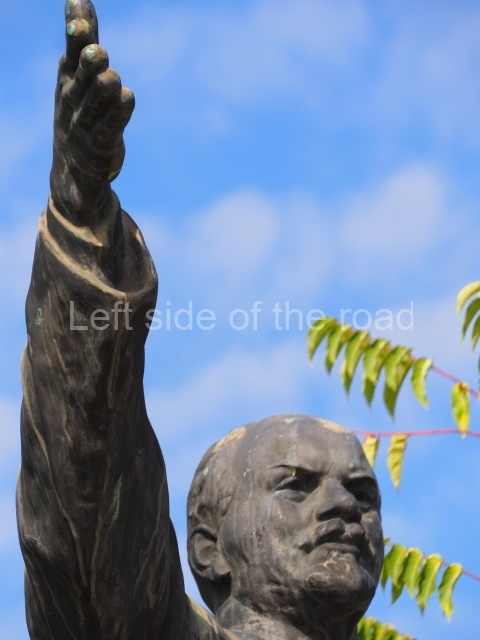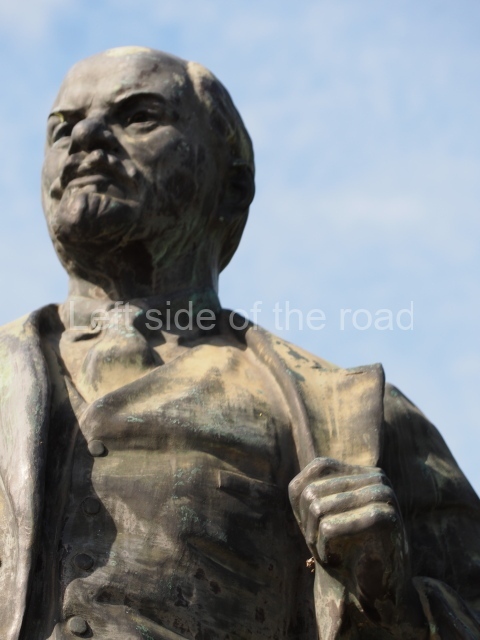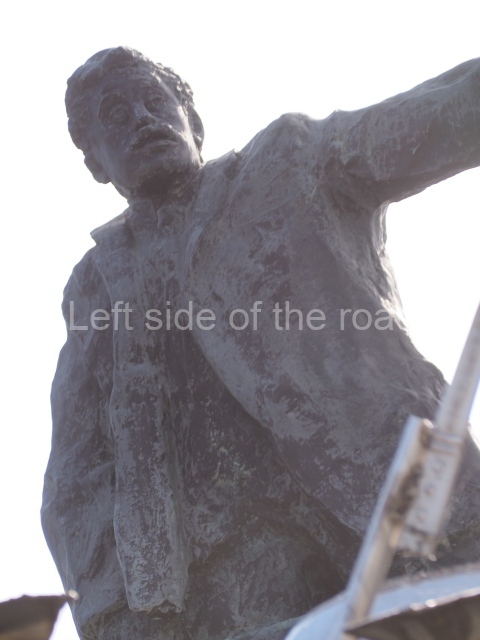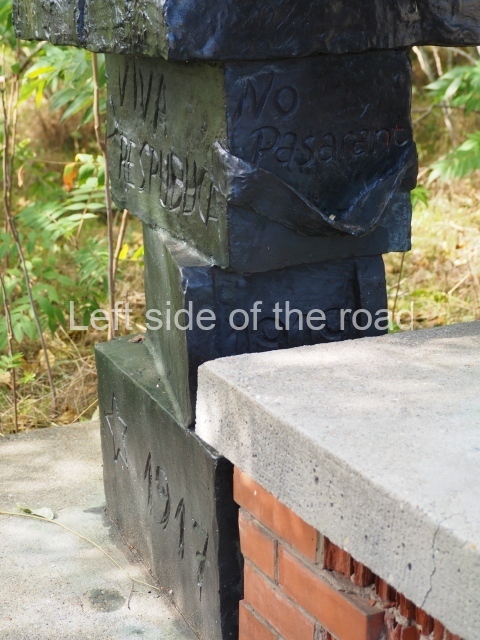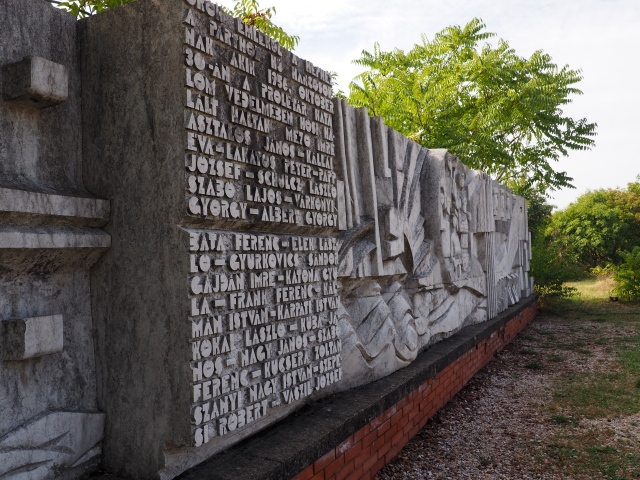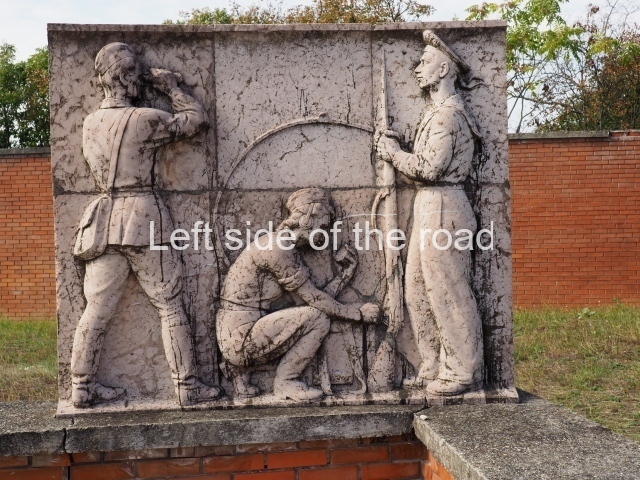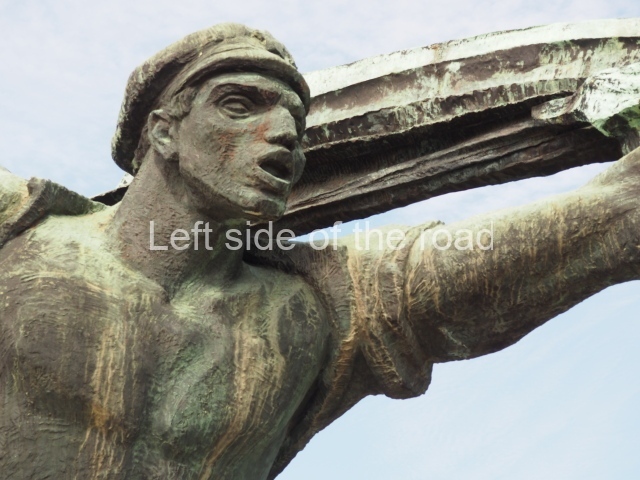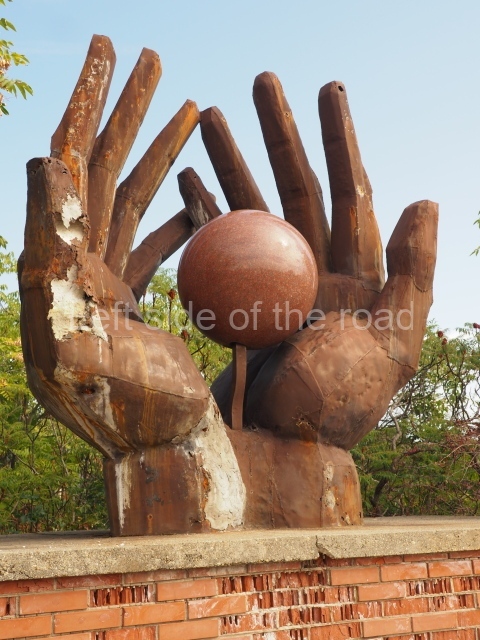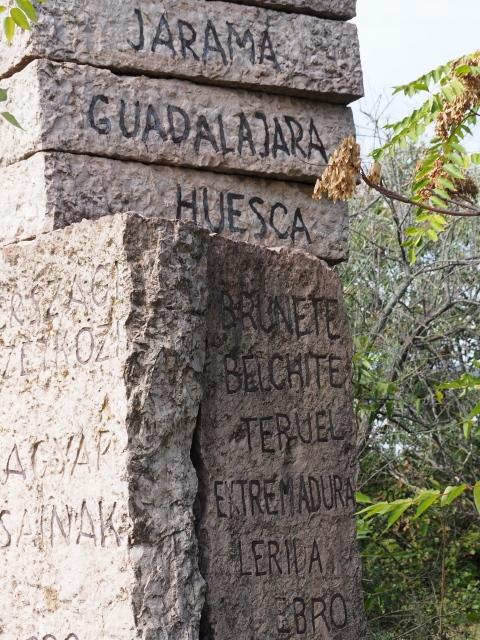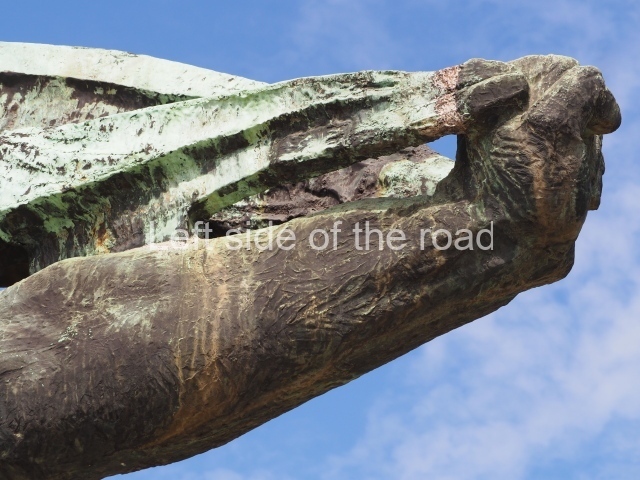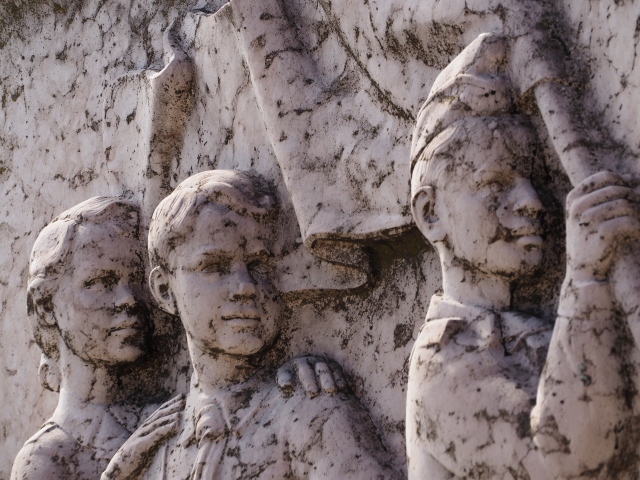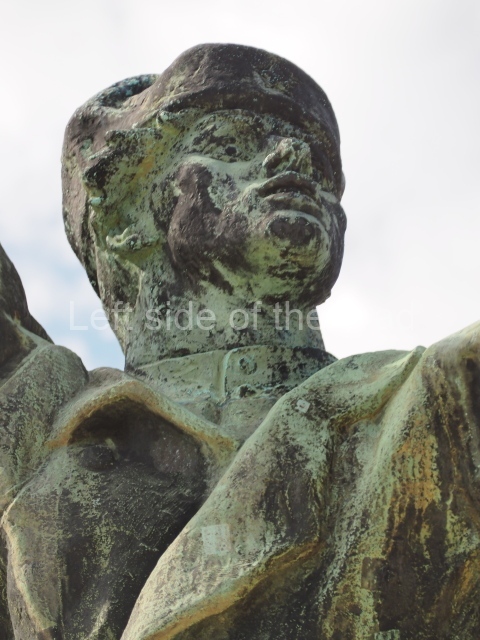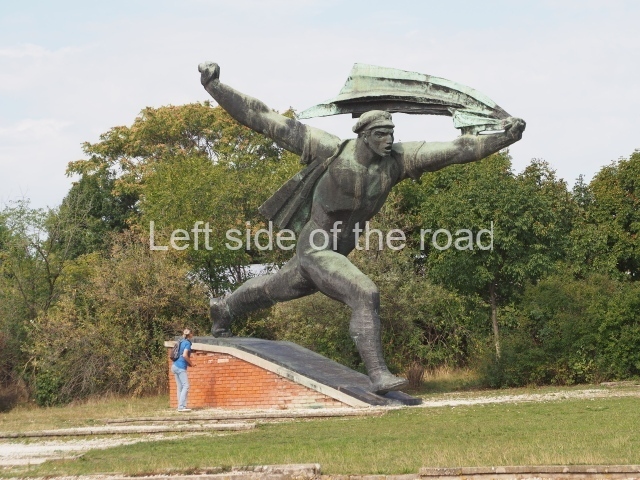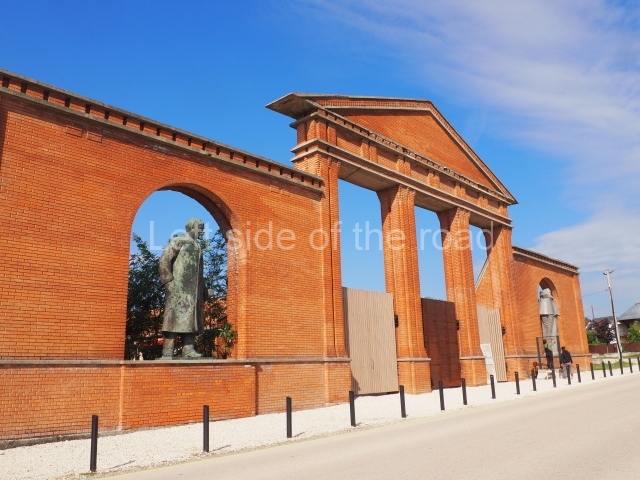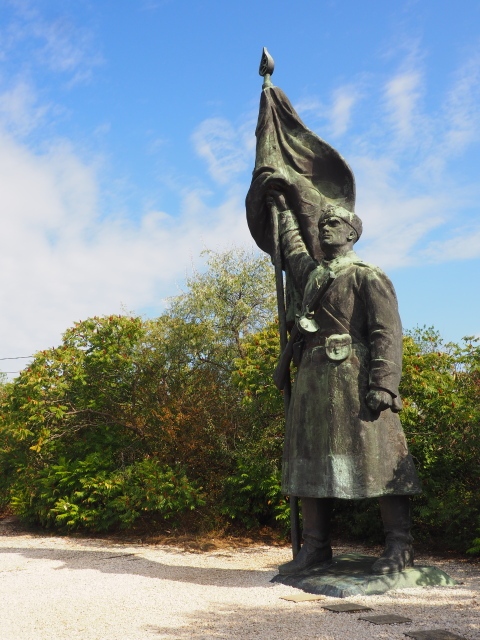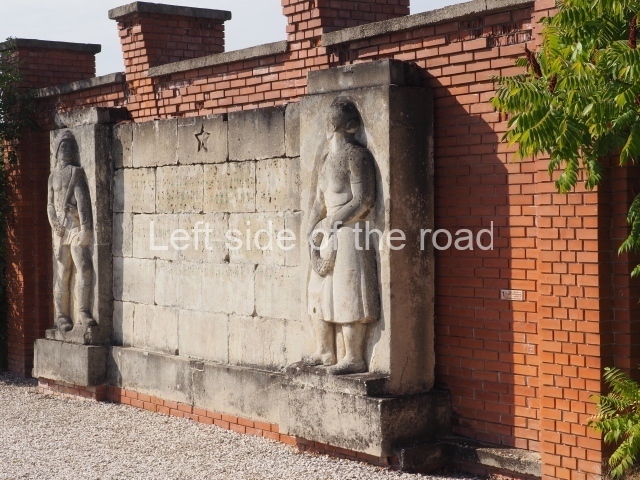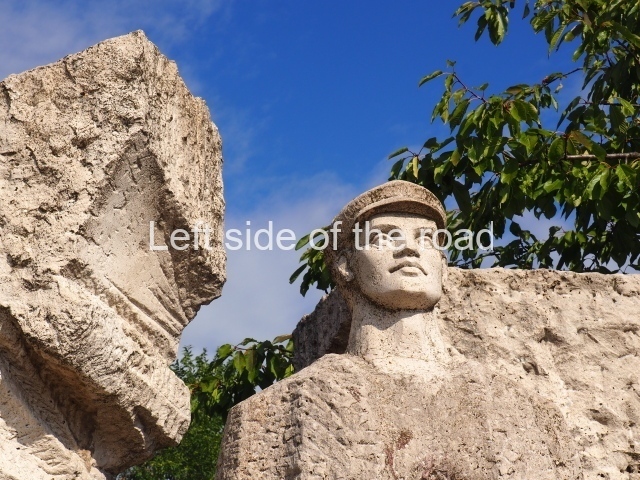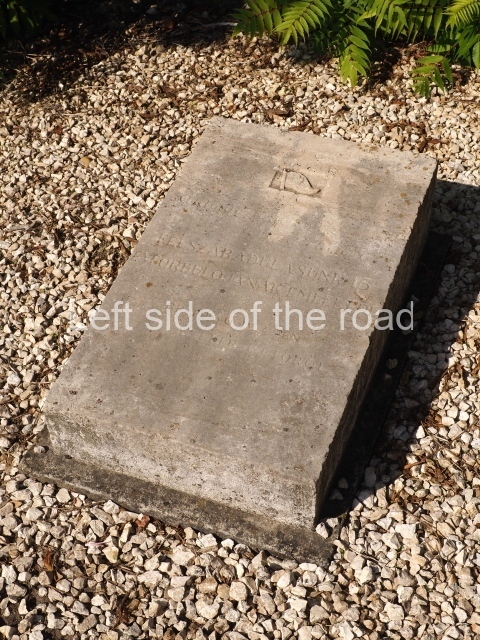Lenin Square – Stalingrad
Following the dissolution of the (Revisionist) Soviet Union at the end of 1991 many of the monuments to Socialist Heroes were removed. Some were ‘attacked’ and vandalised, some were later removed officially and put into some sort of storage. But this wasn’t the case everywhere. Often the names of streets were changed, but again, this wasn’t always the case. One of the cities where you can still find major monuments to the Socialist period and statues of Socialist leaders and heroes is the city of Stalingrad.
Running from the southern edge of the city centre, parallel to the River Volga, and going way past the Mamayev Kurgan and the Motherland Calls statue is Lenin Avenue. This arrives at Lenin Square which is opposite the House of Officers Cultural Centre and on the river side of the avenue. It is here you find a tall, stepped plinth, ending in a circular platform on which stands a twice life-size statue of VI Lenin.
The square is now called Lenin Square but whether that was the case before the statue was installed I have been, as yet, unable to find out. This statue was a relatively late addition, being inaugurated in 1960 on the occasion of the 90th anniversary of VI Lenin’s birth. It’s possible a not so impressive statue stood in that square before 1960.
VI Lenin Statue
Lenin is looking towards the city with his back to the River Volga. His right hand is outstretched and his left hand is clutching the lapel of his overcoat. Here we get the impression that Lenin is giving a speech out in the open, in the winter months. This is not an unusual stance for a statue of the first Bolshevik leader.
The statue itself looks in good condition however, the plinth itself is in need of some tender care and attention. Being in Stalingrad we have the extremes of weather which will take its toll on outside monuments and over time it seems water has gotten behind some of the marble slabs on the facade of the plinth and they are starting to come away from the concrete underneath. The Lenin installation has only one word at the base, on the front, which is the name of Lenin in Cyrillic (ЛЕНИН).
Sculptor;
Yevgeny Vucetich, who also created The Motherland Calls! at Mamayev Kurgan, the statue of ‘Iron Felix’ Dzerzhinsky, that used to stand in front of the Lubyanka Building in Central Moscow but which is now in Muzeon Art Park, as well as the statue ‘Let Us Beat Swords into Plowshares’, which stands outside the United Nations Building in New York and a copy of which is immediately outside the entrance to the New Tretyakov Gallery in Moscow.
‘Pavlov’s House’ Memorial Arch and Wall
However, Lenin Square is quite a large space and it includes other elements of Socialist history and examples of Socialist art. Behind the statue of Lenin is a memorial arch which forms the rear of what is known in Stalingrad as ‘Pavlov’s House’. ‘Pavlov’s House’ became a symbol of the resistance of ordinary soldiers against the Nazi invasion where Sergeant Pavlov, with a small group of men, held out for 58 days. Being virtually surrounded by the invading fascists they survived by being supplied through tunnels constructed towards the river from where supplies arrived from across the Volga. This defiance became a symbol (and was promoted as such) of resistance to the Nazi fascist invasion.
As in all wars, in all countries, some form of resistance takes on an importance much greater than it might have been militarily. Almost certainly this small holdout against the invaders wasn’t the most important of the innumerable struggles in the city but it was indicative of the resistance of the Red Army and the people of Stalingrad to the invaders.
After the war most what remained of the building was demolished and a new apartment block constructed in its place. There’s now a small part, which faces towards the Stalingrad Panorama Museum, that remains as a monument to the affair. Again, at an unknown date to me, the memorial arch was constructed on the eastern edge of Lenin Square at the rear of the apartment complex.
The memorial arch is a collection of columns, surmounted by an entablature, in a concave formation which encompasses virtually the whole of the open space of Lenin Square. Exactly in the middle of the arrangement of columns, and directly behind the Lenin statue, is a wall that goes from ground level to the top of the columns.
On the top left of this wall there’s a huge, stylised depiction of the head of a Russian Red Army soldier, taking up more than a quarter of the available space. Next to this image, at the top right are the numbers and words (in Cyrillic);
58 ДНЕЙ В ОГНЕ
meaning;
58 days of fire (the time they were holding out against the invaders)
Underneath are images representing the story of the resistance in the building. On the left-hand side you have two soldiers, one kneeling and firing a very long-barrelled gun which is known as a PTRS 41 anti-tank rifle. This is something I never knew existed until I read the story about ‘Pavlov’s House’. It seems that from their vantage point on the top of the block of flats the Red Army soldiers were able to do quite serious damage to any tanks which tried to get close to the building. Even to this day battle tanks concentrate their armour on the surrounds of the vehicle leaving the turret as the weakest point. This Soviet made anti-tank rifle was very effective if it could be fired from a high point. The bullet would pierce the weak armour and then ricochet within the vehicle causing mayhem in the process.
Above this kneeling soldier is another who is about to swing a landmine down on the approaching tanks or Nazi soldiers. They didn’t have artillery as such so the mines were the most powerful armament they could use as a substitute. On the right-hand side there’s an image of four soldiers – two of them, who are standing one in front of the other, are firing heavy machine guns at the enemy. Behind them, lying on the ground, is an image of a wounded comrade. Standing, and dominating the whole of the group, is a soldier (in profile and facing to the right) holding a rifle by the barrel, vertically, in his right hand and his left arm outstretched in front of him towards the enemy. His mouth is open as he’s shouting for others to come and join the fight. This is a common representation in Socialist Realist art indicating moving forward and calling upon others to join the advance or the battle against the enemy. This can be seen, for example, in many of the Albanian lapidars.
Below the group of soldiers, at the bottom of the wall, there’s a list of the names of those soldiers who held out for the 58 days.
To the left of the wall, on the railings which constitute the majority of the lower part of the arch, there’s a large, cast iron wreath inside of which is the ceremonial five pointed star. In the centre of the star is the Hammer and Sickle – the symbol of the Soviet Union. Surrounding that are the words;
ОТЕУЕСТВЕННАЯ ВОИНА
meaning
Fatherland War
Emanating from both sides of the wreath are metal ribbons attached to the railings. So in place of a temporary wreath that would be placed at the memorial on significant dates we have one that is permanently in place.
Memorial to NKVD Soldiers
In the square there’s also another, smaller memorial. This is to Lenin’s right and closer to the road and entrance to the Metro station. This is a small memorial garden, with decorated marble, which mark a mass grave and commemorates the soldiers of the 13th Guards Rifle Division and the 10th Division of the NKVD (Narodnyy komissariat vnutrennikh del, Народный комиссариат внутренних дел), the People’s Commissariat for Internal Affairs, who died in the battles for Stalingrad.
The inscription at the head of the memorial (which resembles a large individual grave you would find in a cemetery) reads;
ВЕЛИКИЕ ПОДВИГИ ВАШИ БЕССМЕРТНЫ
YOUR GREAT DEEDS ARE IMMORTAL
СЛАВА О ВАС ПЕРЕЖИВЕТ ВЕКА ПАМЯТЬ О ВАС НАВСЕГДА СОХРАНИТ РОДИНА
YOUR FAME WILL OUTLIVE THE AGES, YOUR MEMORY WILL BE PRESERVED FOREVER BY YOUR HOMELAND.
АВГУСТ 1942 – ЯНВАРЬ 1943
AUGUST 1942 – JANUARY 1943
I have been, unfortunately, unable to find out exactly why this specific memorial to those particular soldiers was created nor exactly when the memorial was installed.
Location;
Lenin Square (Ploshchad Lenina)
GPS;
48.7166934° N
44.5303396° E
DMS;
48°42′59.42″ N
44°31′49.29″ E
How to get there;
The entrance/exit of the Ploshchad Lenina Metro station is right at the square. Also any bus heading in the direction of Mamayev Kurgan, from the centre of town, passes by the square. The square is also on the way to the Stalingrad Panorama Museum, the Stalingrad Siege Museum.





